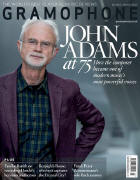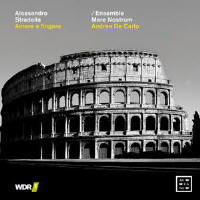Texte paru dans: / Appeared in: |
|
|
Outil de traduction |
|
|
Reviewer:
David Vickers Amare e fingere was staged in Siena in May or June 1676 but might have been first performed in Rome a year or so earlier. Sources of this hitherto unknown opera have been rediscovered in the Chigi archive in the Vatican library, and also in a large collection that once belonged to the papal musician Giovan Battista Vulpio. Arnaldo Morelli’s essay proposes that the librettist was probably Giovanni Filippo Apolloni, poet and friend of Cardinal Flavio Chigi (organiser of opera productions in Rome, his palace at Ariccia, and, tellingly, his birthplace Siena). Based loosely on Spaniard Agustín Moreto’s comedy Fingir y amar (1661), four royal characters dissemble Arcadian identities, causing their sojourn in the Arabian countryside to become entangled by incorrect assumptions, misunderstandings, amorous deceptions, jealousy and eventually the jeopardy of a duel before everything works out happily in the end. The Persian prince Artabano, disguised as Fileno, has the hots for Clori, but when she turns out to be his long-lost sister Despina (who had been abducted by bandits 10 years earlier), she ends up with Prince Coraspe of Egypt (who has been hiding under the pseudonym Rosalbo); Artabano gets hitched to the Arabian queen Oronta (hiding from responsibility by pretending to be Celia). Amid all this there are interjections from Despina’s anxious tutor Silvano and Oronta’s plucky servant Erinda. Ensemble Mare Nostrum field two violins and a very large contingent of basso continuo instruments. Recitatives are performed gutsily, with a revolving door of instrumentation. Generally short arias are packed with rhythmical vitality (copious hemiolas) and unpredictable quirks of harmonic imagination that all strengthen the case for Stradella’s authorship. Andrea De Carlo’s direction has energetic momentum yet also captures intimate subtleties. Mauro Borgioni’s resonant Fileno is gleefully ireful when preparing for his duel with Luca Cervoni’s Rosalbo; the latter has gently poetic music, such as the dulcet love song ‘Fuggo i lampi, incontro i fulmini’ (a prudent deception of Celia) and a sorrowful sleep scene. Paola Valentina Molinari sings with tender pathos as she waits yearningly for Rosalbo and later when she laments her abduction by Fileno. The feistier and more imperious Celia has the lively fandango ‘Stella rea, stella infierita’ (she plays guitar to assuage her pangs), but the disguised queen’s own suffering in unrequited love is conveyed touchingly by Josè Maria Lo Monaco (‘O mio cor, che novità?’, in partnership with sensitive violins). Chiara Brunello’s low alto sounds suitably androgynous as the constantly worried Silvano. Silvia Frigato’s nonchalant Erinda is vocally outstanding in the merrily dancelike ‘Ninfe care, ninfe belle’ at the end of Act 1 (presumably the ensuing instrumental dances, like the opening sinfonia, are missing from the sources). Several masterfully crafted chamber duets, such as Clori and Rosalbo’s ‘Alla fuga, alla fuga’, foreshadow Steffani and Handel. A valuable rehabilitation of Stradella’s operatic sphere. |
|




